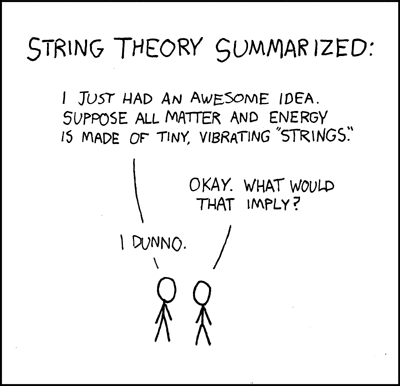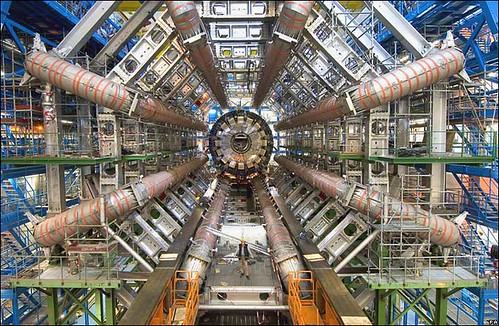Stephen Hawking is causing a stir. In a
book excerpt published in tomorrow's Wall Street Journal, Hawking addresses the ever-controversial topic of science and religion. His take? The presence of a Creator is rendered completely unnecessary by modern science.
Hawking cites the so-called anthropic principle as the reason many people believe God must exist. The anthropic principle comes in two forms: the "weak" anthropic principle, which states that we developed on Earth because specific factors in our environment allowed us to do so, and the "strong" anthropic principle, which states that our existence as intelligent life-forms mandates the parameters inherent in the laws of nature themselves. For most, the weak anthropic principle is easily debunked. There are plenty of environments in the universe where intelligent life did not develop; we naturally find ourselves in one in which it did. This planet wasn't fine-tuned for the conditions of human life, human life was fine-tuned for this planet. Essentially, we are a statistic. Most people would agree with that in the context of the universe at large.
The controversial part of Hawking's statement, however, is his belief that the strong anthropic principle can be logically unravelled in the same way. The problem with the strong anthropic principle is that we have nothing to compare it to. As far as we are concerned, our universe is the only one. There are a variety of finely-tuned physical constraints inherent in the laws of physics, without which we would not exist. For instance, if gravity were any weaker, stars would never have formed in the early universe. Meanwhile, if gravity were stronger, our sun would have burned through all of its hydrogen already. Take your pick: the strength of the fundamental forces, the precise ratio of matter to antimatter, the stability of heavy elements like carbon, even the number of spatial dimensions in the universe; any of these is at the least, peculiar, and for some, explicit proof of God's existence.
But with the dawn of new cosmology - specifically evidence that points to the
existence of multiple universes - Hawking believes that this principle too can be explained away. Just as there are many stars in our universe that are not orbited by planets, and many planets in our universe that are not hospitable to life, there are also many universes within our multiverse in which these physical parameters do have different values, and in which intelligent life was never able to form. Once again, we are a statistic. A Creator did not concoct a universe for our benefit; we evolved as a consequence of the specific universe we are in. Human life was inevitable, not essential. Or so Hawking believes.
First, let me say that I have no problem discussing science and religion in the same sentence. In fact, I think it can be extremely valuable. For my part, I know that science has profoundly affected and enriched my own spirituality. However, I don't think that Hawking's bold statement is going to do much to heal the schism between fundamentalist religion and modern science. There are altogether too many people who actually believe the Earth was created 6000 years ago, and who blatantly ignore scientific fact because they see it a contradiction of their own religious beliefs. Don't get me wrong - I'm a big believer in grey areas, but that is just absurd and ignorant. To be sure, a dialogue needs to be initiated, and a mutual one at that. Evolution absolutely needs to be taught in schools, but not at the expense of prayer or spiritual pride. Unfortunately, while I admire the conviction, I just don't think Hawkingism is going to win any new converts.



